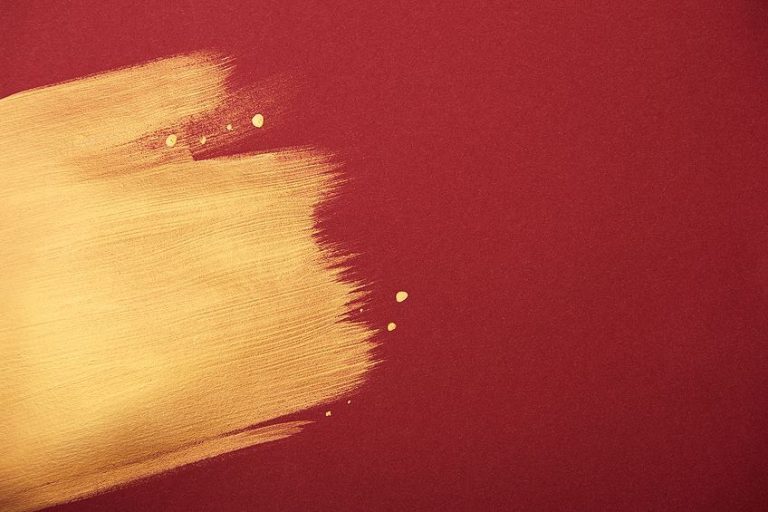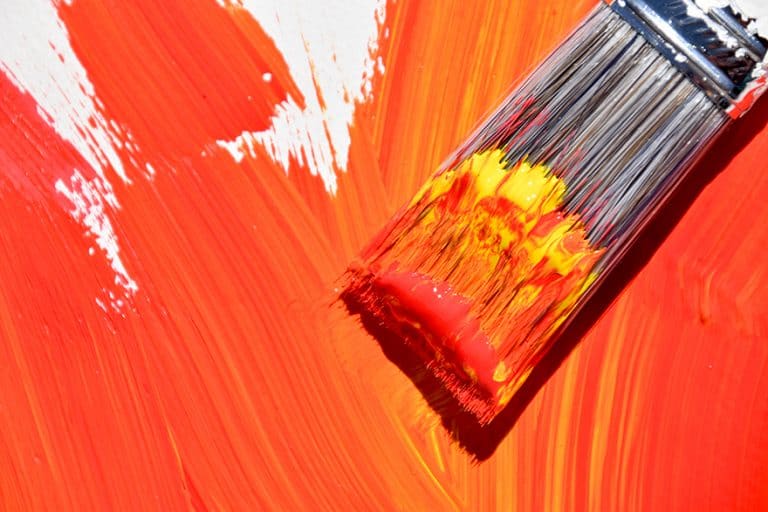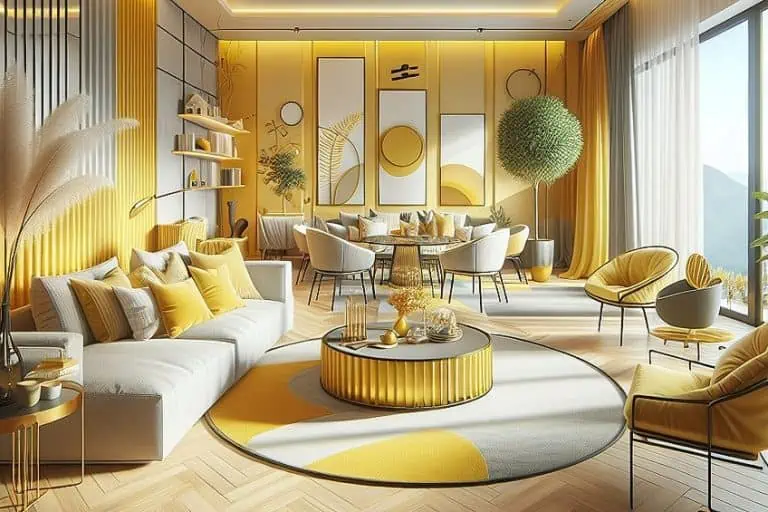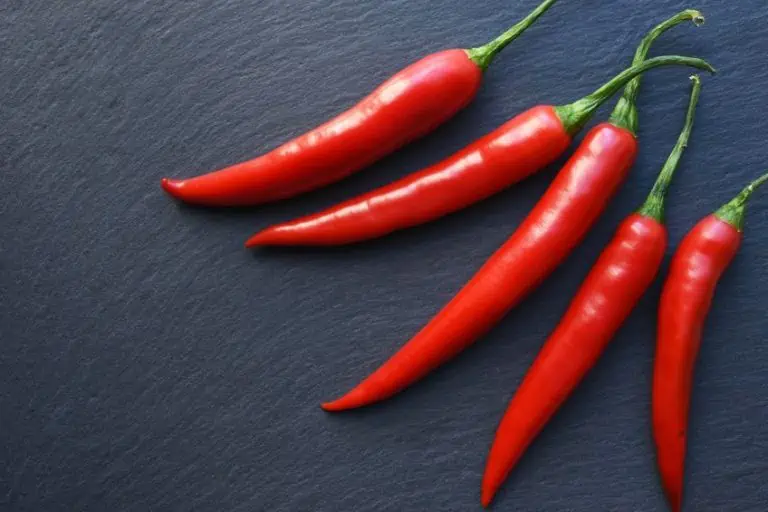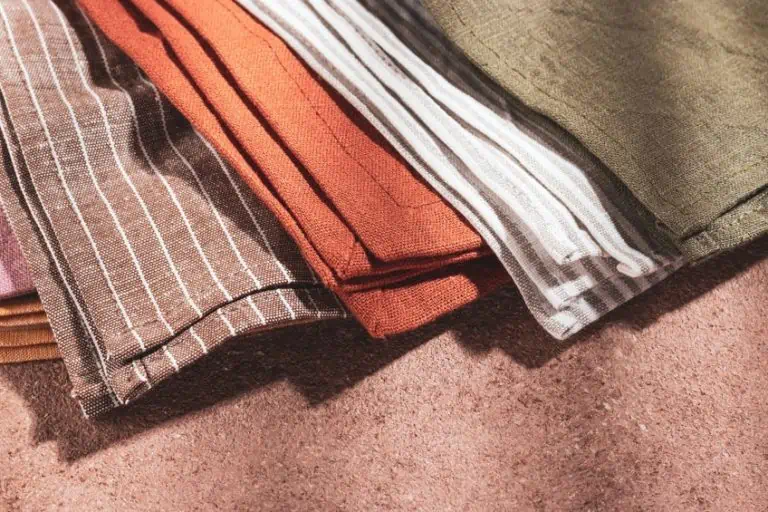What Colors Make Green? – How to Mix Different Shades of Green
This post may contain affiliate links. We may earn a small commission from purchases made through them, at no additional cost to you.
At the very beginning of your color-mixing journey, learning how to mix colors is an essential step. Green is one of the more complicated colors to mix because there is so much variation. You may think mixing green is as easy as mixing yellow with blue, but things are not so simple. In this article, we will break down the process of making different shades and tints of green.
Table of Contents
- 1 What Colors Make Green?
- 2 Navigating the Color Bias: Mixing with Warm and Cool Primary Colors
- 2.1 Ranking Yellows from Cool to Warm
- 2.2 Ranking Blues from Cool to Warm
- 2.3 Muting Bright Green With Complementary Colors
- 2.4 Adjusting the Temperature of Green
- 2.5 Tinting and Shading: Creating Different Levels of Green Color
- 2.6 How to Create Lighter Tints of Green
- 2.7 How to Create Darker Shades of Green
- 2.8 Using Purple and Other Colors to Darken Your Green
- 3 How to Make Green Without Using Yellow
- 4 Scientific Formulation for Mixing Different Shades of Green
- 5 Colors that Go with Green
- 6 Frequently Asked Questions
What Colors Make Green?
There are so many questions to answer before we start mixing. Do you want to know how to make neon green paint, or what colors make lime green? What two colors make green anyway? We will answer these questions and more in good time, but we need to start with the basics. Starting at the very beginning, you can make a basic green color by mixing yellow and blue. If you are very new to color mixing, a color mixing chart can be helpful. When you combine the colors opposite each other on the wheel, you will create the color between them.
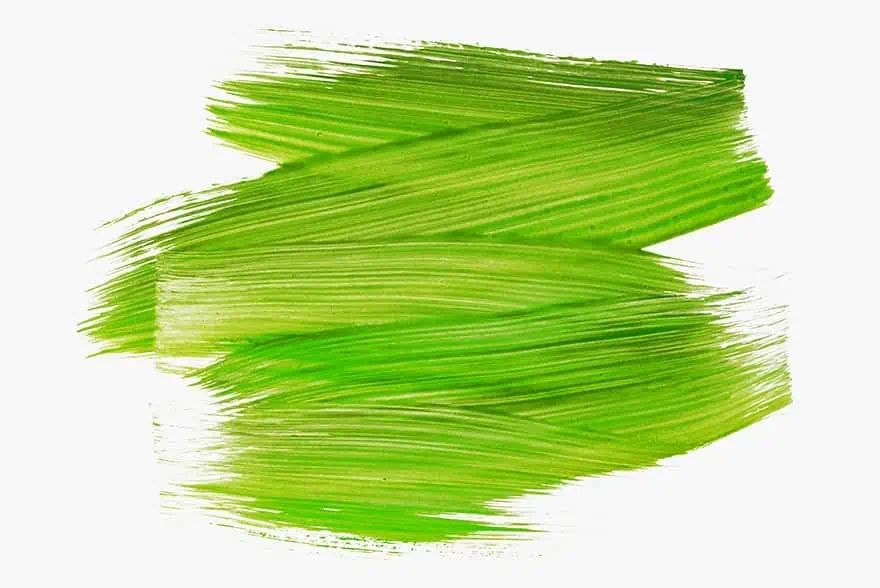
If mixing green was as simple as that, we could stop right here. The real question we need to be asking is, “what kind of green do you want to make?” There are many different yellow and blue shades available, and depending on which ones you use, you can create an enormous number of green shades. Each different shade of yellow and blue leans towards other colors. For example, cadmium yellow inclines toward red pigments while cadmium lemon is closer to blue. Another example is the difference between ultramarine blue, which is closer to red, and manganese blue, which leans towards yellow hues. This phenomenon is known as color bias, and it is essential to understand how it will influence your color mixing.
Mixing colors is not as simple as grabbing the closest blue and yellow and making the perfect green. There are multiple ways of going about mixing green from these two colors. If you have a growing collection of paints in your studio, try gathering all of your yellow and blue shades together. You will likely be surprised as to the number you have of each.
While yellow and blue are the correct answer on a general level, we need to look a little closer to control the green we produce.
You can use only two primary colors if you want to achieve a vivid secondary. Combining all three primary colors is likely to produce a secondary color that is quite muddy and closer to brown than the color we want. If we are blending a warm blue with red in it with a warm yellow (that also contains red), we are inadvertently combining all three primary colors.
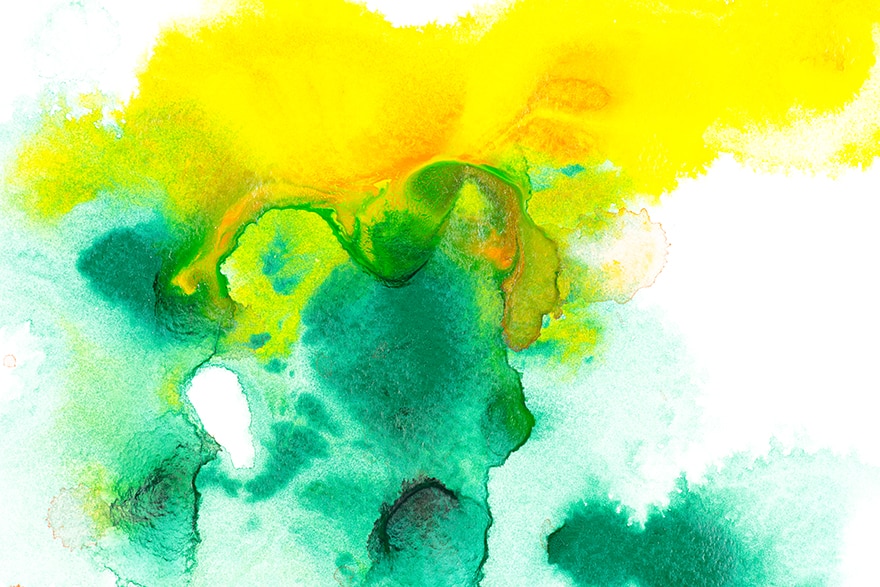
Ranking Yellows from Cool to Warm
You will be able to tell the relative temperature of your yellow colors by looking at them. Yellow shades that are closer to orange are warmer relative to yellows that appear greener. We believe that it is best to think of color temperature not as an absolute but as a relative term. The color ranking here is relative and based on the names of oil paints. From cool to warm, the yellow colors rank as follows:
- Cadmium yellow light or Cadmium lemon
- Cadmium yellow
- Naples yellow
- Yellow ochre
Ranking Blues from Cool to Warm
You can alter the exact shade of your green by changing either the yellow or blue shade you are using. Just like yellow colors, blues range from cool to warm relative to the other available blues. If we were to rank the most common blues from cool to warm, the list would be as follows:
- Manganese blue
- Cobalt blue
- Ultramarine blue
Muting Bright Green With Complementary Colors
You can create a bright and vivid green shade by blending a cool yellow with a cool blue. If you want to paint life-like scenes, you will need more than vivid green. An essential part of mixing green colors is knowing how to mute them. If you want to mute the green a little, add a small amount of the complementary color, red.
Mixing complementary colors will make each color less vibrant. So when you mix a small amount of red into your vivid green, the green will be less green than it was.
Just like the many shades of blue and yellow, there are many shades of red. Each shade of red will alter your green in a slightly different way, so you need to choose wisely. A cooler red, like alizarin crimson, will mute your green but keep it fairly cool. If you want a darker, more earthy green, try mixing a little burnt sienna or another warmer red into your green. Taking some time to get to grips with the color wheel will set you in good stead for mixing any shade you desire.
Adjusting the Temperature of Green
While we are considering color temperature, we should take about creating warm and cold green shades. As you know, color temperature is a key consideration when mixing any color, particularly greens. If you want to paint a landscape, you can use different temperatures to communicate to the viewer whether it is cold and wintery or bright and sunny. For the remainder of the article, the green that we are using as a base example is a mixture of ultramarine blue and cadmium yellow.
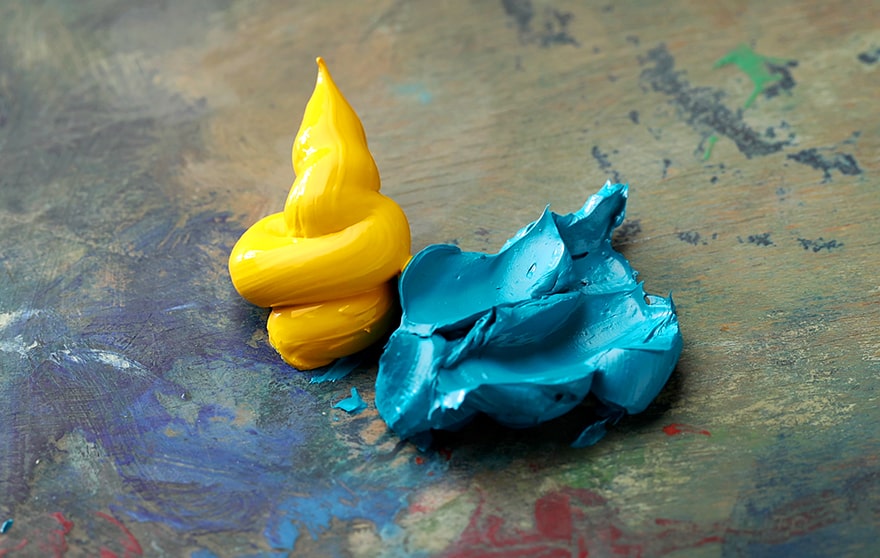
How to Make Cooler Shades of Green
You can use several colors to make a cooler shade of green, including some purples and other shades of green. You can also add more blue to your green shade to cool it down further, but be sure to use a cool blue! If you want to know how to make emerald green, you have come to the right place. We love two purple shades in particular. The first purple is dioxazine purple which is quite a dark purple shade. Adding dioxazine purple to your green mix is a great way to make it cooler and darker at the same time.
If you only want to make your green cooler without darkening it, you can try adding a little Provence violet bluish. This purple creates a lovely subtle cool green.
You can also use other green tones to cool down your green mix. Again, we have two green shades that we love to use. Veronese green is a lovely cool green shade, almost like a teal, and you can use it to cool down any shade of green. Using Veronese green will also make your green much more saturated, so we suggest using this if you want your green to pop more. You can also use pthalo green to cool down and add more saturation to your green shade. Pthalo green is even more saturated than Veronese green. We suggest using pthalo green if you want to cool down and darken your green at the same time.
How to Make Warmer Shades of Green
Having read this far in the article, you will intuitively know that adding warm colors like reds, yellows, and oranges to your green will warm them up. Using an orange shade like cadmium orange is a fantastic way to warm up your green. We also love to use yellow ochre to warm up green tones, particularly if we want a more earthy green. Yellow ochre is an earthy color, so it will naturally make your green lean slightly towards brown.
Another fantastic option for warming your green is to use a little alizarin crimson. This red is very dark and pigmented, so it will also darken your green a little. The best red to use when warming up a green shade is cadmium red.
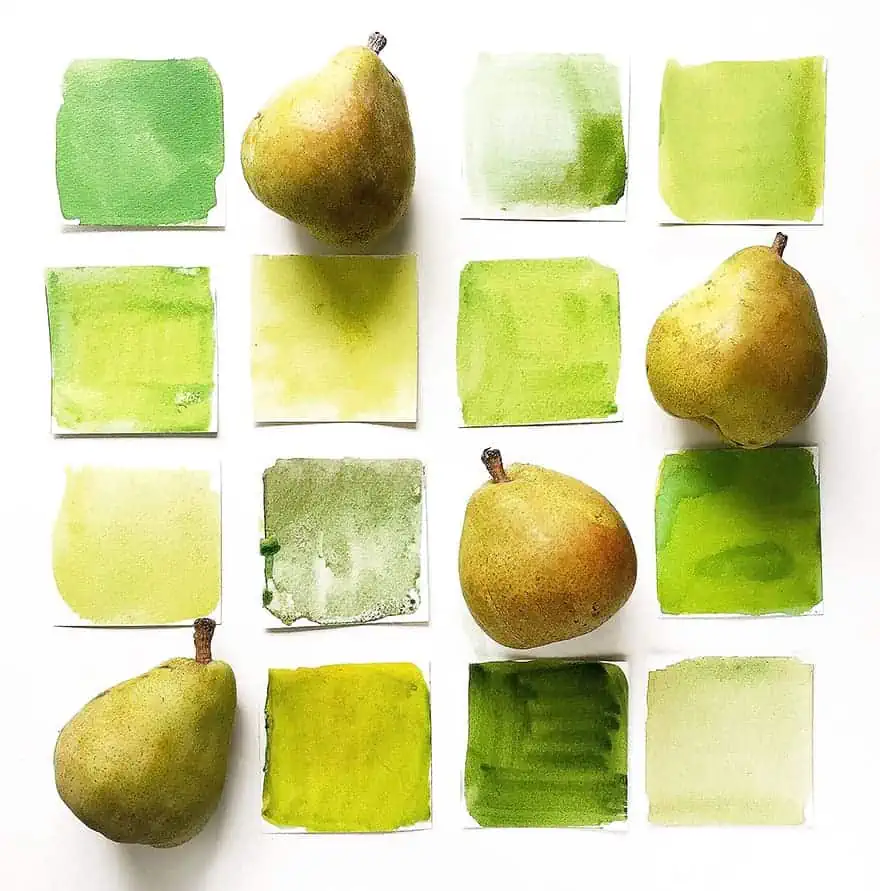
Tinting and Shading: Creating Different Levels of Green Color
If you have questions like what colors make green, what two colors make dark green, or how to make olive green paint, you have come to the right place. To make colors darker, you can use shades. Oppositely, tints make colors lighter. As green is a complex secondary color, and you already know the considerations that go into producing just the right shade of green, shading and tinting can be a little complicated.
Generally, white is the most common tint used to make colors lighter. When it comes to tinting green, white does not quite hit the mark on its own. Adding white to green often produces a shade similar to sage but lacking depth.
For shading, the most commonly used color is black. Many black paints use a green base. This green base can be problematic if you want to make grey, but for shading green, it is perfect. If you want to know how to make forest green paint, it is as easy as adding a little black. To make other darker shades of green, however, you will need to do a little experimentation.
How to Create Lighter Tints of Green
Light green shades are an essential part of any painting that incorporates green. Whether you need to create variation in the leaves of a tree or add a highlight where the light hits a green surface, you really need to know how to make lighter tints of green. If you want to know what colors make mint green, look no further than a lovely green shade and some white.
When we want to know what colors make light green, we need to consider several things. Adding white to green is the easiest and most common way to make light green, but there are other methods, and it is best not to limit yourself to only using white. Creating a light green with white can result in slightly pale and uninspiring greens.
Using Yellow to Lighten Your Green
Adding a little more yellow to your green is a fantastic way of creating a light green shade. You can create several different shades of light green by using different yellows in differing amounts. Not only does the yellow lighten the green, but it also makes it a little more vivid. In terms of what colors make mint green, you should start with a green shade that contains a fair amount of yellow and then add some white.
For a light, almost lime green shade of green, try adding a little cadmium light yellow. You can add a warmer yellow to make your green lighter but warmer. As with all things color mixing, you need to run some experiments for yourself.
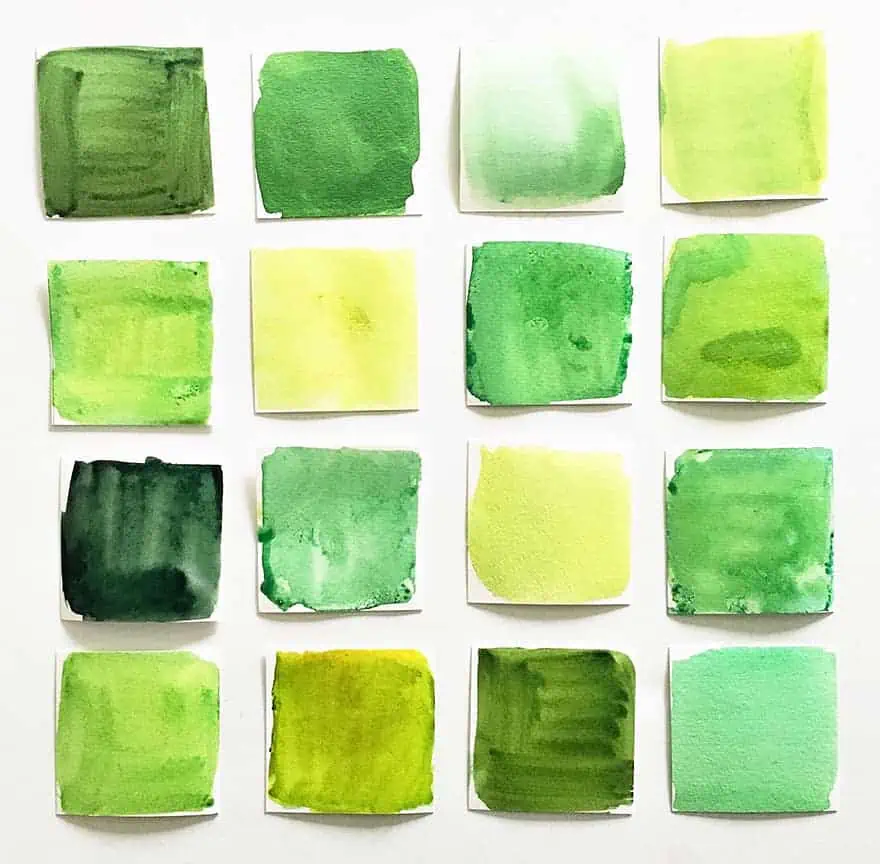
How to Create Darker Shades of Green
Knowing how to create darker shades of green is just as important as knowing what colors make light green. Whether you want to create variation in the shrubbery or emphasize dimension by adding shadows, darker shades of green are an indispensable part of any painting. You need to know what two colors make dark green. There are so many circumstances in which you will need to create a variety of dark rich greens.
While using black is the easiest way to darken your green colors, just like with lightning, you run the risk of creating dull and monotone paintings if that is the only method you use.
Using Purple and Other Colors to Darken Your Green
Adding a little purple is a fantastic option for creating a deep and rich dark green shade. As purple is a secondary color that contains red, you can use it to mix a darker, more earthy green tone. If you do not want your darker green to be warm, dioxazine purple is your best option because it is a much cooler purple shade.

You can also darken your green shade by adding a little pthalo green to the mix. Adding pthalo green will make a much cooler dark green shade, almost like a dark teal. The pthalo green pigment will darken your green very quickly, so you should only add a little at a time. This color is also very saturated, so if you need to, you can mute it down by adding some alizarin crimson to the mix. You can also experiment with adding a little more dark blue paint to your green mix for a cool darker green. If you want to create a dark, earthy green that verges on brown, you cannot go wrong with adding burnt umber to your green. The burnt umber pigment is a brown shade, so if you do not want your green to be earthy, steer clear of this option.
How to Make Green Without Using Yellow
At this point, you may believe that we are going slightly crazy from inhaling paint fumes. After all this talk of yellow and blue, how could we possibly make green without yellow? What colors make green, if not blue and yellow? It is absolutely possible to make a variety of green shades without using yellow, and the options are exciting.

Using Orange to Make Green
So, if you cannot use yellow, what two colors make green? You can simply replace the yellow with orange to make a range of different green shades. We suggest using a cooler orange, so one that is closer to yellow than it is to red. Depending on the exact shade of green you want, you can mix a single orange shade with a range of blues.
To make a light green shade, mix your orange with a cool blue like pthalo blue.
You can experiment with the proportions, but this blend is beautifully bright and light green. For a more earthy green, try using ultramarine blue. This green shade is not as vibrant as the combination of orange and pthalo blue, but it is nice and earthy. You can also try mixing orange with grey or black. The green produced by these two blending options is much closer to brown and a little darker.
Using Raw Sienna to Make Green
As with orange, you can replace the yellow in our green formula with raw sienna. Again, these greens may not be as light or bright as they would be with yellow because raw sienna is a much warmer color. We suggest experimenting with different shades by mixing raw sienna with a range of blue colors. Raw sienna and pthalo blue create a lovely deep bluish-green while mixing raw sienna with Prussian blue makes a more earthy green tone.

Scientific Formulation for Mixing Different Shades of Green
Color theory is quite complicated, involving different proportions of red, green, and blue, and also cyan, magenta, yellow, and black. If you know color theory, we have created a reference table to help you mix any of these shades of green easily.
| Green Shade | Hex Number | % Red, Green, Blue | % cyan, magenta, yellow, black | Shade of Green |
| How to make perfect green paint | #008000 | 0% R, 153% G, 0% B | 85% C, 12% M, 100% Y, 2% K | |
| How to make forest green paint | #0b6623 | 0% R, 102% G, 51% B | 91% C, 34% M, 100% Y, 27% K | |
| How to make olive green paint | #708238 | 112% R, 130% G, 56% B | 59% C, 32% M, 100% Y, 13% K | |
| How to make sage green paint | #9dc183 | 157% R, 193% G, 131% B | 42% C, 7% M, 63% Y, 0% K | |
| How to make neon green paint (chartreuse) | #7fff00 | 127% R, 255% G, 0% B | 49% C, 0% M, 100% Y, 0% K | |
| How to make emerald green paint (teal) | #008080 | 0% R, 128% G, 128% B | 87% C, 31% M, 49% Y, 8% K | |
| What colors make lime green paint | #c7ea46 | 199% R, 234% G, 70% B | 27% C, 0% M, 92% Y, 0% K | |
| How to make turquoise green paint | #3fe0d0 | 63% R, 224% G, 208% B | 58% C, 0% M, 29% Y, 0% K | |
| How to make blue-green paint | #0d98ba | 13% R, 152% G, 186% B | 80% C, 25% M, 17% Y, 0% K | |
| How to make aqua green paint | #00FFFF | 0% R, 255% G, 255% B | 53% C, 0% M, 12% Y, 0% K |
Colors that Go with Green
To choose a matching accent color, you can use a color wheel to find colors that go with green. Here are some recommendations that work well with almost any kind of green:
- Pink is a fancy combination of green
- Earth tones like brown are an ideal match for green
- Yellow is also a good match for green
- Purple, Violet, and Blue work fantastic
We have a separate in-depth article about what colors go with green.
View our How To Make Green web story here.
Frequently Asked Questions
What is Greens’ Complementary Color?
The complementary color to true green is red. You can use red to mute down a very bright green shade. Other shades of green, like olive green, sit next to true green on the color wheel. As a result, different shades of green will have complementary colors that are different shades of red.
What Colors Make Light Green?
You can make a vibrant light green shade by mixing a lot of light yellow with some blue. If you want to know how to make mint green paint, you simply add a little white to this light green. You can also lighten any green shade by adding a little more yellow or white.
Can you tell me How to Make Forest Green Paint?
Forest green paint is actually fairly easy to make. You can start with almost any shade of green, made by mixing yellow and blue. To darken the green, you can add a tiny amount of black. You can also try adding a little bit of purple if you do not want to use black.
Can You Make Green Without Yellow?
Surprisingly, you can very easily make a range of green shades without using yellow. A cool and bright orange shade can replace the yellow in your green mixing formulation. It is always a good idea to have a color mixing chart on hand to help you find a cool orange and blue.
Duncan graduated with a diploma in Film and TV production from CityVarsity in 2018, after which he continued pursuing film while taking on a keen interest in writing along the way. Since having graduated, he began working as a freelance videographer, filming a variety of music videos, fashion and short films, adverts, weddings and more. Throughout this, he’s won a number of awards from various film festivals that are both locally and internationally recognized. However, Duncan still enjoys writing articles in between his filming ventures, appreciating the peace and clarity that comes with it.
His articles focus primarily around helping up-and-coming artists explore the basics of certain colors, how these colors can be paired with other shades, as well as what colors are created when you mix one with another. All while relating these shades to historically significant paintings that have incorporated them into their color palette. As a lover of the arts himself, he takes great interest in the Renaissance era of paintings, an era that has directly inspired many of his favorite films.
Learn more about Duncan van der Merwe and about us.

